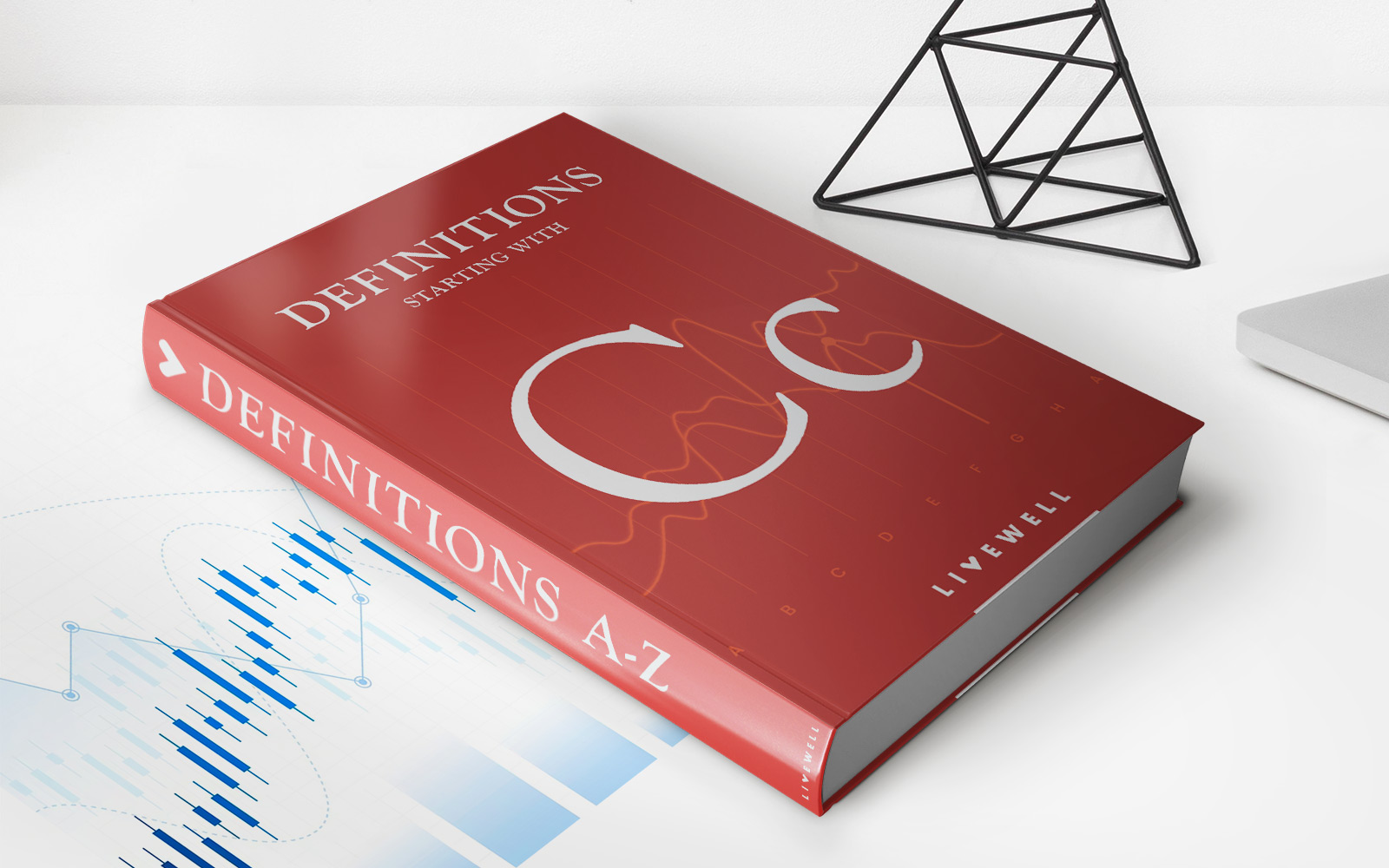

Finance
What Is Optimal Revolving Credit Utilization
Published: March 6, 2024
Learn about optimal revolving credit utilization and its impact on your finances. Discover how to manage your credit wisely for financial success.
(Many of the links in this article redirect to a specific reviewed product. Your purchase of these products through affiliate links helps to generate commission for LiveWell, at no extra cost. Learn more)
Table of Contents
**
Introduction
**
Welcome to the world of revolving credit utilization, a critical aspect of personal finance that affects your credit score and financial well-being. Understanding the concept of revolving credit utilization is essential for anyone who holds credit cards or uses revolving credit lines. In this comprehensive guide, we will delve into the intricacies of revolving credit utilization, exploring its significance, factors affecting optimal utilization, and practical tips for maintaining an ideal credit utilization ratio.
Revolving credit utilization refers to the percentage of your available credit that you are currently using. It plays a pivotal role in determining your credit score, as it reflects your ability to manage credit responsibly. Lenders and financial institutions scrutinize this metric to assess your creditworthiness and financial stability. Consequently, maintaining an optimal revolving credit utilization ratio is crucial for securing favorable interest rates on loans, obtaining new lines of credit, and demonstrating financial responsibility to potential lenders.
As we embark on this enlightening journey, we will unravel the key factors that influence optimal revolving credit utilization, shed light on its importance, and equip you with actionable tips to achieve and maintain an ideal credit utilization ratio. By the end of this guide, you will possess a comprehensive understanding of revolving credit utilization, empowering you to make informed financial decisions and cultivate a healthy credit profile.
Understanding Revolving Credit Utilization
Revolving credit utilization is a fundamental metric that measures the proportion of your available credit that you are currently using. This metric is calculated by dividing your outstanding credit card balances by the total credit limit across all your credit cards. For instance, if you have a total credit limit of $10,000 and an outstanding balance of $2,000, your revolving credit utilization ratio would be 20%.
It is important to note that revolving credit utilization is a dynamic metric that can fluctuate from month to month based on your credit card usage and payment patterns. Lenders typically report your credit card balances to credit bureaus once a month, which means that your utilization ratio is also reported monthly. Consequently, it is crucial to monitor and manage your credit card balances to ensure that your revolving credit utilization remains within an optimal range.
Key Points to Remember:
- Revolving credit utilization is the percentage of available credit that you are currently using.
- It is calculated by dividing your outstanding credit card balances by the total credit limit across all your credit cards.
- This metric is reported to credit bureaus monthly and has a direct impact on your credit score.
Understanding the intricacies of revolving credit utilization empowers you to make informed decisions regarding your credit card usage and payment behavior. By comprehending the factors that influence this metric and its implications on your credit score, you can proactively manage your credit utilization to maintain a healthy credit profile and improve your overall financial well-being.
Factors Affecting Optimal Revolving Credit Utilization
Several factors influence the optimal revolving credit utilization ratio, shaping the way it impacts your credit score and overall financial health. Understanding these factors is essential for effectively managing your credit utilization and maximizing its positive impact on your credit profile.
Credit Limit:
Your total credit limit across all your credit cards directly affects your revolving credit utilization. A higher credit limit provides more room for managing your balances while keeping your utilization ratio low. Conversely, a lower credit limit can lead to higher utilization, potentially impacting your credit score negatively.
Credit Card Balances:
The balances you carry on your credit cards significantly impact your revolving credit utilization. Maintaining high balances relative to your credit limits can elevate your utilization ratio, potentially signaling financial distress to lenders and adversely affecting your credit score.
Payment Behavior:
Your payment behavior plays a crucial role in managing your revolving credit utilization. Making timely and substantial payments can lower your outstanding balances, subsequently reducing your utilization ratio. Conversely, late or minimal payments can contribute to higher utilization and negatively impact your credit score.
Credit Card Usage Patterns:
How you use your credit cards and allocate your spending across different cards can influence your utilization ratio. Strategic allocation of expenses and conscious utilization of available credit can help maintain an optimal utilization ratio and demonstrate responsible credit management.
Credit Score Impact:
Your revolving credit utilization has a direct impact on your credit score. High utilization ratios can lower your credit score, while low utilization ratios can positively influence it. Monitoring and managing your utilization ratio is crucial for safeguarding and improving your credit score over time.
By considering these factors and their implications, you can proactively manage your revolving credit utilization to maintain an optimal ratio, enhance your creditworthiness, and secure favorable financial opportunities.
Importance of Maintaining Optimal Revolving Credit Utilization
Maintaining an optimal revolving credit utilization ratio is of paramount importance for several reasons, as it directly impacts your credit score, financial stability, and access to favorable credit opportunities.
Credit Score Impact:
Your revolving credit utilization is a key factor in calculating your credit score. High utilization ratios can signal financial distress and may lower your credit score, while low utilization ratios can positively influence it. By maintaining an optimal utilization ratio, you can safeguard and enhance your credit score, which is crucial for accessing competitive loan rates, credit cards with favorable terms, and other financial products.
Lender Perception:
Lenders and financial institutions assess your credit utilization to gauge your financial responsibility and creditworthiness. A high utilization ratio may raise concerns about your ability to manage debt, potentially impacting your eligibility for new credit or favorable interest rates. Conversely, a low utilization ratio reflects prudent credit management and strengthens your standing with potential lenders.
Financial Flexibility:
Maintaining an optimal revolving credit utilization ratio provides financial flexibility and enhances your ability to respond to unexpected expenses or financial opportunities. By keeping your utilization in check, you ensure that you have available credit for emergencies and can capitalize on favorable financial products when needed.
Long-Term Credit Health:
An optimal utilization ratio contributes to your long-term credit health and financial well-being. By managing your credit utilization effectively, you demonstrate responsible credit management, which can lead to improved credit terms, higher credit limits, and a positive credit history over time.
Overall Financial Well-Being:
Your credit utilization ratio is a reflection of your overall financial health and responsible credit management. By maintaining an optimal ratio, you exhibit prudent financial behavior and position yourself for enhanced financial opportunities, improved credit terms, and a secure financial future.
Recognizing the significance of maintaining an optimal revolving credit utilization ratio empowers you to make informed decisions about your credit card usage, payments, and overall credit management. By prioritizing an optimal utilization ratio, you can bolster your credit score, strengthen your financial standing, and pave the way for a brighter financial future.
Tips for Achieving Optimal Revolving Credit Utilization
Achieving and maintaining an optimal revolving credit utilization ratio is a strategic endeavor that requires conscious financial management and prudent credit utilization. By implementing the following tips, you can effectively manage your credit utilization and bolster your credit profile:
Regularly Monitor Your Credit Card Balances:
Frequent monitoring of your credit card balances allows you to stay informed about your utilization ratio and take proactive measures to keep it within an optimal range. Consider setting up balance alerts or utilizing financial management tools to track your balances effectively.
Strategically Allocate Your Spending:
Be mindful of how you allocate your credit card spending to ensure that your utilization ratio remains favorable. Avoid maxing out individual cards and aim to distribute your expenses across multiple cards to maintain a healthy utilization ratio on each account.
Consider Requesting a Credit Limit Increase:
If appropriate for your financial situation, requesting a credit limit increase can provide more headroom for managing your balances and lowering your utilization ratio. However, it is crucial to exercise restraint and avoid increasing your spending following a credit limit raise.
Make Timely and Substantial Payments:
Consistently making substantial payments on your credit card balances can help reduce your utilization ratio and demonstrate responsible credit management. Aim to pay more than the minimum amount due to effectively lower your outstanding balances.
Avoid Closing Unused Credit Card Accounts:
While it may be tempting to close unused credit card accounts, doing so can impact your overall credit utilization ratio. Keeping these accounts open can contribute to a lower aggregate utilization ratio, provided the cards remain unused or carry minimal balances.
Be Mindful of New Credit Applications:
When applying for new credit, consider the potential impact on your utilization ratio. Opening new credit accounts can impact your overall credit limit and alter your utilization ratio, so exercise caution when pursuing new lines of credit.
By incorporating these tips into your financial management practices, you can effectively manage your revolving credit utilization and maintain an optimal utilization ratio. Consistent monitoring, strategic spending, and responsible credit management are pivotal in achieving a healthy credit utilization ratio and fortifying your financial well-being.
Conclusion
Revolving credit utilization is a cornerstone of sound financial management, playing a pivotal role in shaping your credit score, financial stability, and access to credit opportunities. By comprehending the intricacies of revolving credit utilization and its impact on your credit profile, you can proactively manage this metric to bolster your financial well-being.
Throughout this guide, we have explored the nuances of revolving credit utilization, delving into its calculation, factors influencing optimal utilization, and the significance of maintaining a healthy utilization ratio. Understanding the interplay between credit limits, balances, payment behavior, and credit score impact empowers you to make informed decisions about your credit utilization and overall credit management.
By prioritizing an optimal revolving credit utilization ratio, you position yourself for enhanced creditworthiness, improved access to financial products, and long-term financial health. Implementing strategic measures such as regular monitoring of balances, strategic spending allocation, and responsible payment behavior enables you to achieve and maintain an ideal utilization ratio, fortifying your credit profile and financial standing.
As you navigate your financial journey, remember that maintaining an optimal revolving credit utilization ratio is a dynamic and ongoing endeavor. By staying attuned to your credit card balances, exercising prudent credit management, and leveraging the tips outlined in this guide, you can cultivate a healthy credit utilization ratio and pave the way for a secure financial future.
Empowered with the knowledge and insights gleaned from this guide, you are poised to navigate the realm of revolving credit utilization with confidence, making informed decisions that bolster your credit profile and contribute to your overall financial well-being.














